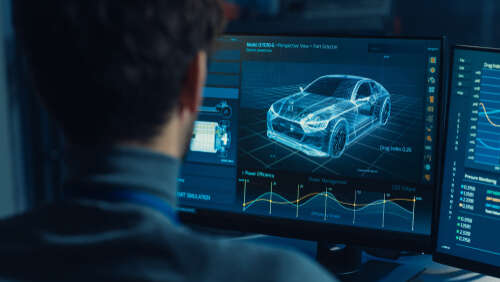
The metaverse may feel like it is already plunging into the trough of disillusionment on the Gartner hype cycle, but plenty of opportunities exist for businesses to take advantage of virtual environments, delegates at Mobile World Congress heard on Monday.

With Meta announcing mass layoffs as its metaverse division runs up big losses, and Microsoft cutting jobs in its teams working on virtual and mixed reality projects – and facing multiple regulatory hurdles in its bid to acquire Activision Blizzard – progress towards large-scale digital worlds where business and social interactions can take place appears to have stalled.
Consumers, meanwhile, appear unconvinced about the concept, with only 32% of Brits who answered a recent survey saying they would be willing to participate in virtual worlds.
But while the grand plan for the metaverse may have yet to materialise, the industrial metaverse is already a reality for many businesses, and this presents both opportunities and challenges for tech leaders, the conference in Barcelona was told.
How the metaverse is changing businesses
A panel session entitled From metaverse to matterverse, how to do it right, heard from Ronnie Vasishta, SVP Telecom at chipmaker Nvidia, which is already heavily invested in the metaverse through its growing Omniverse platform.
“We’re already seeing significant productivity improvements having immersive experiences within a digital twin for very complex factory or warehouse automation,” Vasishta said.
“BMW has a factory it has built in the metaverse, a complete digital twin. It enables one to do a lot of scenario planning and productisation improvements that you couldn’t do in the real world. The creation of a physically accurate environment you can ‘wormhole’ in and out of creates all kinds of opportunities.”
Jan Junker, EVP for solution sales and delivery, at TeamViewer, said his organisation was seeing growth in related use cases. “We’re seeing a lot of deployments in logistics for picking, manufacturing, quality assurance and remote support,” he said. “Aftersales service is a big area where the industrial metaverse is being deployed today.”
Challenges for the industrial metaverse
For industrial metaverse deployments to continue to grow, standards will need to be developed rapidly, said Alexandra Foster, director of BT’s Division X digital business unit.
“As an industry, we’ve been good at leading on standards and interoperability,” Foster said. “These need to exist across the industry [for the metaverse]. There will be times where you need a unique environment and avatar, but at other times it’s going to be about collaboration.
“When you’re doing a collaboration in the metaverse it will be a pervasive state, and you’re going to need operability as you go from one state to another. We’re a long way from that.”
Junker said standard types of data being used across platforms would be important. “At the moment data is often not in the right format,” he said. “You need data [to be the same] all through your processes and it’s often not there. It might be stored in a PDF and then you’ll need to redo that data to use it in the industrial metaverse.”
Taimoor Husain, global business manager at Microsoft, added that a secure method of establishing digital identity in the metaverse would be required. Microsoft is part of the Metaverse Standards Forum, which is seeking to establish such norms, and Husain said: “We really need to make sure that identity is credible because I’m going to trust an avatar in the metaverse more than I would an email, for example. These are the security challenges we need to address.”
How should tech leaders approach the industrial metaverse?
Despite these challenges, TeamViewer’s Junker said there are already significant gains to be made in the metaverse.
“There are very few applications for fully virtual environments,” he said. “Usually it’s a real person in the real world doing something, and that person needs digital instructions, needs to capture information or needs remote expert assistance.
“It’s about providing a seamless digital experience to that person so that they can focus on what they’re good at – they need to be able to focus on physical objects and not focus on having to interact with digital systems. That digital element needs to be automatic.”
Tech leaders wishing to utilise the metaverse should be realistic about what they can achieve, Junker said. “When you deploy an industrial metaverse project you don’t immediately shoot for the stars,” he explained. “You should be thinking about what the next step is in terms of connecting staff and ‘things’ in order to reach the ultimate goal of the metaverse, but also to get a return on investment.”
He added: “Until every frontline worker has a headset on their head, a seamless blend between physical and digital world is still ten years away. But there is a lot of return on investment in the industrial metaverse today. Maybe not the one we dream and wish for, but a lot of companies are already leveraging this.”






